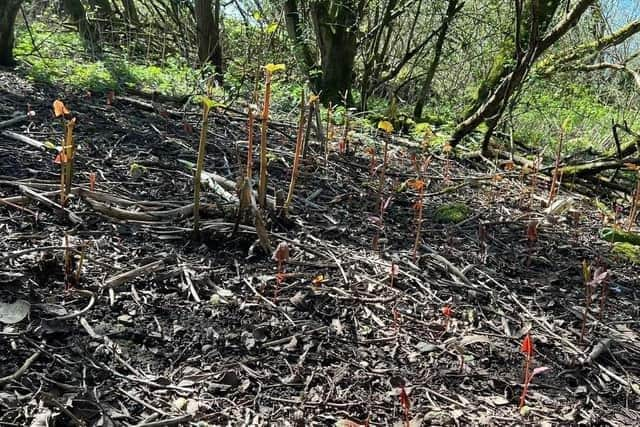Wigan one of the worst places in Greater Manchester for Japanese knotweed infestations
and live on Freeview channel 276
As Japanese knotweed’s summer growth period draws to a close, invasive plant specialist Environet has analysed the latest data from its live online tracker to reveal this year’s Japanese knotweed hotspots.
And it shows that Wigan is the fourth worst place in Greater Manchester for infestations with no fewer than 239 reported cases.
Advertisement
Hide AdAdvertisement
Hide AdPopulated with almost 58,000 known infestations of the UK’s most invasive plant and charting its spread across the country, Exposed: The Japanese Knotweed Heatmap alerts homeowners and homebuyers to the risk level in their local area.


Users can enter their postcode directly into the map to discover the number of verified knotweed sightings within a 4km radius, with hotspots highlighted in yellow, orange or, in the worst cases, red.
They can also add sightings by uploading a photo to be verified by experts.
With a total of 2,807 known infestations across Greater Manchester, there are 2.2 occurrences of Japanese knotweed in every 1km². Wigan’s near neighbour Bolton (1,010 cases) was worst hit in the city region and is also the second-worst affected location in England and Wales, after Swansea (1,350 infestations).
Advertisement
Hide AdAdvertisement
Hide AdJapanese knotweed usually emerges in March or April and grows rapidly to reach up to 2.5 metres in height by mid-summer. It is identifiable by its hard, bamboo-like canes and distinctive shield-shaped bright green leaves which grow in a zigzag pattern along the stem.
Mature plants flower in August, becoming covered in clusters of delicate tasselled creamy-white flowers. Knotweed does not produce viable seeds as all the plants in the UK are female, so it is usually spread accidentally through the movement of soil or gardening waste, or via rivers and streams when pieces of rhizome break off and take hold in new locations.
Tackling knotweed costs the UK economy nearly £250m a year and homeowners are one of the groups most at risk – not only from potential damage to their property, outbuildings and gardens, which can be costly to repair, but also from legal risks arising from encroachment or when properties are sold.
While it isn’t illegal to have knotweed growing on your land, if it is allowed to cross a boundary into an adjacent property, legal disputes can arise between neighbours. Similarly, when properties are sold, sellers are asked a direct question about whether knotweed is present, even if hidden beneath the ground or within 3m of the boundary, and those who fail to declare it can be sued by their buyer for misrepresentation.
Advertisement
Hide AdAdvertisement
Hide AdEnvironet estimates that approximately five per cent of homes across the UK are currently affected by Japanese knotweed, either directly or neighbouring an affected property, typically impacting property prices by around five per cent - or up to 10 per cent in severe cases.
Nic Seal, founder of Environet, said: “Vigilance is the best way to protect your property from the risks posed by Japanese knotweed.
"Make sure you know what knotweed looks like and how it differs from other common garden weeds like ivy and bindweed, so you can keep an eye out for it in your garden and neighbourhood.
